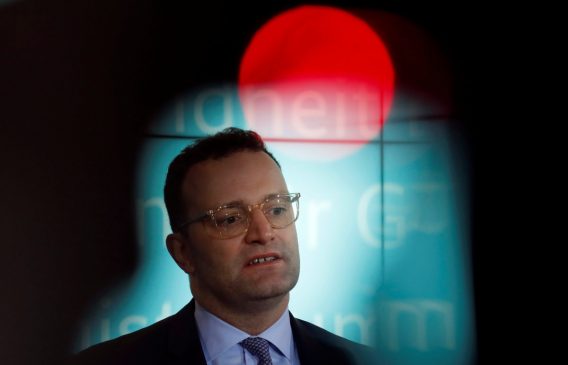- Germany’s health minister said that coronavirus had become a “worldwide pandemic.”
- The World Health Organization is still refusing to refer to the virus using that term.
- But the WHO’s admission that the death rate is higher than first believed shows the urgency of taking things more seriously.
The coronavirus outbreak has become a “worldwide pandemic.” So says Germany’s health minister, Jens Spahn.
Spahn broke ranks with the World Health Organization and officially used the dreaded word “pandemic.” He warned that the coronavirus had “not yet reached its peak in Germany,” or the rest of the world.
Spahn’s warnings come just a day after an eye-opening WHO press conference. The WHO admitted that the COVID-19 death rate is 3.4% – that’s significantly higher than the 2% mortality rate it previously claimed.
So while the WHO remains reluctant to acknowledge the full severity of the situation, it’s clear that situation is getting worse rather than better.
Coronavirus Outbreak Still Hasn’t Peaked
Speaking at the Bundestag today, German Health Minister Spahn gave a sobering update on the coronavirus situation.
Referring to the coronavirus as a “worldwide pandemic,” Spahn said that the situation will only get worse.
No one can seriously say when the peak will be reached. But it’s important to say that it is coming, so that we can be prepared.
He also predicted that the German government will have to shut schools and other public buildings if the disease does spread further.
The next days and weeks will be challenging. There will be restrictions on everyday life in affected areas and that can cause some stress.
The German government isn’t alone in entertaining such drastic measures. Three days ago, the U.K. suggested that it might go so far as closing off entire cities. Health Secretary Matt Hancock said:
Under the worst case scenario we would have to take some quite significant actions that would have social and economic disruption. It may be necessary to close some schools and other population distancing measures.
The United States is in the process of introducing similar measures.
But in taking the step of labeling the coronavirus as a “worldwide pandemic,” the German government has openly acknowledged the full gravity of the threat the virus poses.
The WHO Drags Its Heels
Last month, Prof. Gabriel Leung of Hong Kong University predicted that the coronavirus could spread to between 60% and 80% of the world’s population. Worse, with a death rate of only 1%, this would equal between 46.2 million and 61.6 million deaths.
This is what a worldwide pandemic looks like. And with the German Health Minister’s description of the coronavirus as a pandemic, some national governments are finally waking up to the outbreak’s full threat.
But not, it would seem, the World Health Organization.
Responsible for keeping “the world safe,” the WHO should be the first in line in getting people and governments to act on the coronavirus. And yet it refuses to describe the virus as a “pandemic.” Despite the fact that 70 countries have reported cases of the virus.
Still, it did admit yesterday that the coronavirus’ death rate is higher than it first estimated. So if Prof. Leung’s worst-case estimate of a 60% infection rate comes to fruition, the coronavirus would kill around 157 million people.
But even with this acknowledgement, the WHO is still downplaying the full severity of the situation. Not only is it still refusing to call the coronavirus a “pandemic,” but it delayed declaring a health emergency in January in response to the coronavirus’ initial outbreak.
History damningly shows that the WHO did something very similar with Ebola in 2015.
So if there’s one major casualty of the coronavirus pandemic, it may just be the World Health Organization’s credibility.
Disclaimer: The opinions expressed in this article do not necessarily reflect the views of CCN.com.
This article was edited by Josiah Wilmoth.




